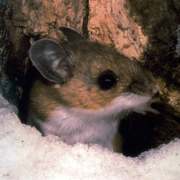Setting the New Standard: Scalability is Imperative for Accessibility
This is the third in a series of monthly blog posts exploring the development of a new standard in corporate conservation certification.
In previous posts we have outlined the defining tenets of an effective Voluntary Sustainability Standard (VSS) that will encourage broad adoption and ultimately increase conservation on corporate lands. These tenets are accessibility, credibility and the ability to drive change. In this post we will dive deeper into a key aspect of accessibility – scalability.
The Wildlife Habitat Council (WHC) has been recognizing conservation on corporate lands for 27 years. This experience has shown that the one thing corporate landholders have in common is the diversity of the lands they manage. Auto manufacturers have proving grounds, technical centers, manufacturing facilities and corporate headquarters. Electric utilities have facilities that create, store and distribute energy—namely power plants, transmission systems and substations. In the building materials sector, quarries, cement factories and ready-mix facilities are all part of the supply chain. With over 800 programs currently certified, WHC understands the possibilities and challenges of conservation on a wide variety of lands.
While many VSS systems are designed for larger, more sophisticated operations and, in the case of conservation, the best available lands, WHC sees potential in every landholding and welcomes all practitioners to participate. This is why WHC views scalability as imperative to facilitate broad adoption of the new standard for corporate conservation.
In its new standard, WHC is promoting scalability in many different ways, but the best expression of it will be found in the Project Guidance documents that will provide applicants with a clear path through a conservation project. These Project Guidances are being developed through a multi-stakeholder process that sets the minimum requirements for recognition and defined a variety of options for higher-level conservation and education outcomes.
Project Guidances will recognize a suite of themes that include habitat types, education opportunities, species’ needs and other conservation-related activities that can take place on corporate lands. When launched, the new standard will have Project Guidance documents for grasslands, wetlands, arid landscapes, pollinators, birds, reptiles and amphibians, bats, game species, formal and informal education opportunities, green infrastructure, protected lands, invasive species management, and a host of other themes around which corporate land managers can design their projects.
Every Project Guidance lays out the basic requirement for recognition, i.e., the activities that must be undertaken for the project to meet WHC’s new standard. For every project, these requirements will include the need: to be locally appropriate, to provide habitat or community value, to exceed any pertinent regulatory requirements and, to meet a stated conservation or education objective. Further requirements will be specific to the stated objectives of each project and will reflect the conservation needs of the habitat or species or best practices in the delivery of conservation and education.
Once basic requirements have been satisfied, a landowner can then choose from a hierarchy of activities that will lead to higher outcomes and higher levels of recognition. This will allow a landowner to create projects specific to their site’s spatial or other limitations and then scale up to meet the full potential of the location and its surroundings.
Scalability is not merely about the size of the project. It can be accomplished in a variety of ways, as follows:
- In a pollinator project, expanding from a basic native garden to a garden with plants supporting multiple pollinator species across multiple seasons or meeting the entire life cycle needs of a specific pollinator.
- When implementing invasive species management, expanding from addressing a single species in a single location at a single time to reviewing operations across the location to ensure the spread of invasive species is minimized both on-site and off.
- Creating outreach to a community by providing trails and signage, or expanding to embrace the local schools across a number of grades and connecting into the core learning standards.
Scalability allows a program to start small and then grow to encompass larger amounts of land. At General Motors’ Warren Tech Center in Michigan, the project team started on 8 acres in a former parking lot and now manages over 70 acres across the facility.
Scalability allows a program to add new projects or expand existing projects as it matures and continue to create conservation and education value. In Gaithersburg, Maryland, Asbury Methodist Village manages all available acreage for wildlife, but adds value by creating signs and interpretive materials for residents, hosting guest speakers to talk about the natural world, inviting elementary school students on site and installing structures like bird boxes to support wildlife.
Scalability allows a program to go beyond the fence line and connect to contiguous habitat or into the community. In Brazil, Monsanto Do Brasil’s Camaçari Plant does both as it restores and reforests a parcel of land that will serve to reconnect two large fragments of Atlantic Forest, one of the most threatened biomes in the world, and uses the project as a teaching tool for students from 40 neighboring schools.
For a VSS to be successful, it must be accessible. To be accessible to all landholders, it must be scalable. WHC is enshrining scalability in its Project Guidance documents, which will be published with the launch of the new standard later this year. In doing so, WHC will ensure that every applicant—regardless of the size and other strictures on their landholdings—will be provided with a clear path towards program establishment, growth, and recognition.









